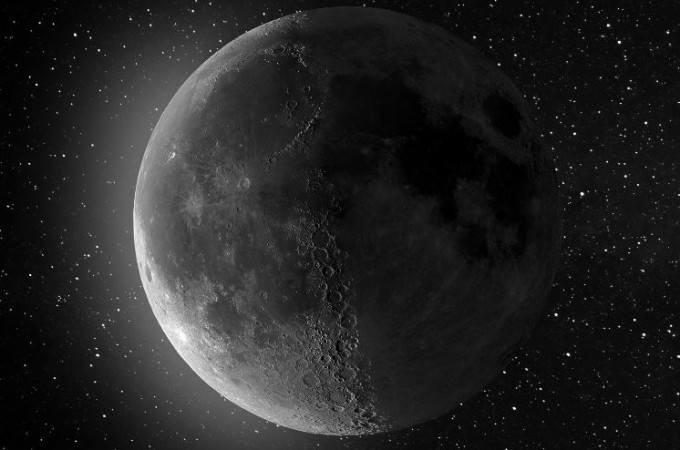
Introduction
The Moon has always fascinated mankind with its mysterious allure. While the near side of the Moon is well-known and has been extensively explored, the dark side remains relatively uncharted territory. In this article, we will delve into the exploration of the dark side of the Moon, uncovering the challenges faced by astronauts and the remarkable discoveries that have been made. Join us as we embark on a captivating journey through space and unravel the secrets hidden on the dark side of our celestial neighbor.
Unveiling the Mystery: The Dark Side of the Moon
The dark side of the Moon, also known as the far side, refers to the hemisphere of the Moon that is permanently facing away from Earth. Contrary to popular belief, the term "dark" does not imply complete absence of light, but rather the lack of visibility from our vantage point on Earth. It remained a mystery until the advent of space exploration and technological advancements enabled us to explore this enigmatic region.
Lunar Missions: A Historical Perspective
Humanity's fascination with the Moon led to several notable lunar missions throughout history. The Apollo program, spearheaded by NASA, successfully landed astronauts on the near side of the Moon between 1969 and 1972. However, the dark side remained unexplored until recent decades due to unique challenges associated with its exploration.
Challenges of Exploring the Dark Side
Exploring the dark side of the Moon presents several hurdles. The lack of direct communication with Earth poses a significant challenge as signals cannot penetrate the Moon's solid mass. Additionally, the terrain is rugged and treacherous, with numerous impact craters and mountainous regions. Overcoming these obstacles requires careful planning, innovative technology, and precise execution.
Overcoming Communication Obstacles
To tackle the communication barrier, space agencies have relied on satellite relays positioned in orbit around the Moon. These satellites act as intermediaries, receiving signals from spacecraft on the dark side and transmitting them back to Earth. This breakthrough has revolutionized our ability to explore and communicate with the far side of the Moon.
Landing on the Far Side: The Chang'e 4 Mission
One of the significant milestones in lunar exploration occurred in January 2019 when China's Chang'e 4 mission successfully landed on the far side of the Moon. This historic achievement marked the first-ever soft landing and deployment of a rover on the dark side. The mission provided valuable insights into the geology and composition of this unexplored region.
Lunar Exploration and Discoveries
The exploration of the dark side of the Moon has unveiled a trove of discoveries. By analyzing lunar samples and data collected from various missions, scientists have gained a deeper understanding of the Moon's history, formation, and evolution. They have discovered evidence of ancient volcanism, impact events, and potential resources that could be harnessed for future space missions.
Studying the Lunar Surface
Robotic missions have enabled detailed studies of the lunar surface on the dark side. Instruments onboard spacecraft and rovers have captured high-resolution images, mapped the topography, and analyzed the chemical composition of the regolith. These findings have shed light on the geological processes and the presence of valuable elements such as helium-3, which could be utilized for energy production in the future.
Geological Features of the Dark Side
The dark side of the Moon showcases a wide array of geological features. Vast plains known as "maria" dominate the near side, while the far side is characterized by rugged highlands and impact basins. The South Pole-Aitken Basin, one of the largest known impact structures in the solar system, is located on the far side and offers valuable insights into the Moon's ancient history.
The Moon's Impact on Earth
Understanding the Moon's influence on Earth is another intriguing aspect of lunar exploration. The Moon's gravitational pull causes tidal forces, shaping ocean currents and influencing our planet's climate. Furthermore, studying the Moon's geology can provide insights into Earth's early history and the processes that shaped our own planet.
Future Prospects and Collaborative Efforts
The exploration of the dark side of the Moon is an ongoing endeavor. Multiple space agencies, including NASA, ESA, and Roscosmos, are planning future missions to further unravel the mysteries hidden on the far side. Collaborative efforts and international partnerships will play a crucial role in advancing our knowledge and paving the way for potential human exploration and colonization.
Conclusion
The exploration of the dark side of the Moon has captivated humanity's imagination and pushed the boundaries of our knowledge. Through groundbreaking missions and scientific discoveries, we have gained remarkable insights into the Moon's geological history, its impact on Earth, and the potential it holds for future space exploration. As we continue our quest to unlock the secrets of the universe, the dark side of the Moon remains a fascinating frontier awaiting further exploration and discovery.
Tragedy Strikes Manipur: Policeman Killed, Ten Injured in Violent Clash
Zohra Sehgal: Honoring the Legacy of an Iconic Artist on Her Death Anniversary
Happy Birthday, Alok Nath: Remembering the Legacy of an Extraordinary Actor